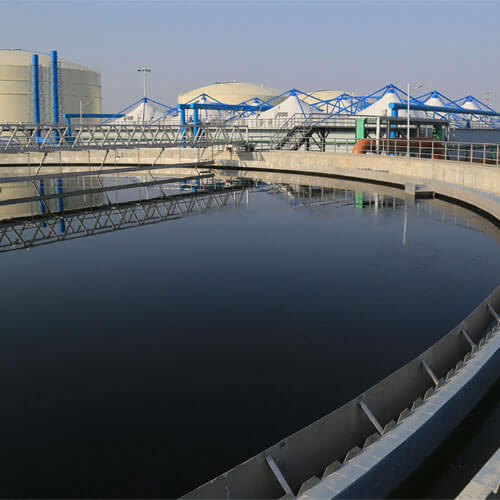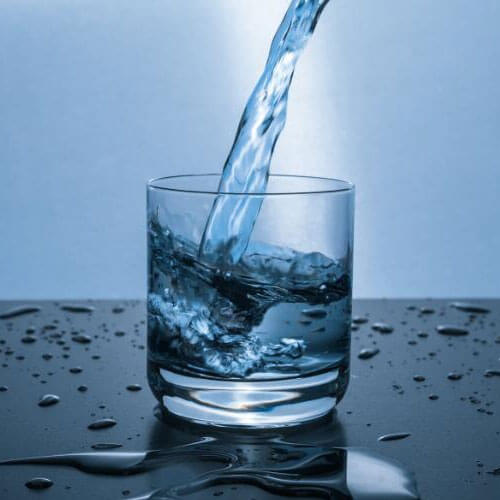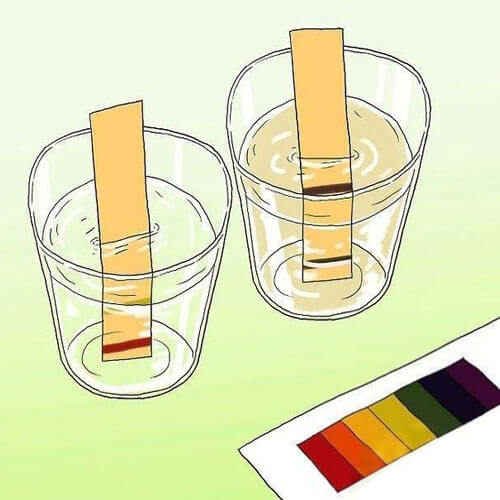In wastewater treatment projects, it is essential to monitor water quality at every stage to ensure that the treated water meets discharge standards. Among the various monitoring parameters, COD, BOD, TOC, and TOD are the most commonly used indicators. Different types of water quality sensors are used throughout the treatment process to continuously assess various parameters. Based on the data collected by water quality analyzers, appropriate treatment methods are applied to ensure that each stage meets the required water quality standards before proceeding to the next step.
4 main indicators of wastewater monitoring
What is COD?
COD stands for Chemical Oxygen Demand, which refers to the amount of oxygen consumed when organic matter in water is oxidized by a strong oxidant. It is a key indicator used to assess the concentration of organic pollutants in water and is typically expressed in mg/L. It reflects the level of organic contamination—higher COD values indicate more severe pollution.
- COD = 20 mg/L: Indicates slight organic pollution, commonly found in secondary effluents.
- COD = 200 mg/L: Indicates significant pollution requiring biochemical or chemical treatment.
- COD > 500 mg/L: Typically found in industrial wastewater or heavily polluted water bodies and requires intensive treatment.
In laboratory settings, chemical oxygen demand is often measured using the potassium dichromate method, in which organic substances in a water sample are oxidized into CO₂ and H₂O under strongly acidic conditions (using concentrated sulfuric acid) with potassium dichromate (K₂Cr₂O₇) as the oxidizing agent. This method is time-consuming and generates secondary pollution.
Video from Karl-Uwe Schmitz
With advancements in technology, COD sensors have been increasingly adopted in wastewater monitoring due to their fast response, accuracy, and environmental friendliness, making them ideal for real-time water quality management.
What is BOD?
BOD stands for Biochemical Oxygen Demand, which refers to the content of organic matter in water samples that can be degraded by microorganisms. It is a critical indicator for measuring the concentration of biodegradable organic substances in water and is typically expressed in mg/L.
To ensure consistency and comparability of BOD measurements, a standard time frame is used—typically five days, known as the 5-day biochemical oxygen demand (BOD₅). BOD₅ is one of the most commonly used parameters in water quality monitoring. The higher the biochemical oxygen demand value, the more organic matter is present, indicating more serious water pollution.
- BOD₅ = 2 mg/L: Indicates good water quality, often found in drinking water sources.
- BOD₅ = 20 mg/L: Typical of domestic sewage, suitable for biological treatment.
- BOD₅ > 100 mg/L: Indicates high-strength organic pollution, commonly found in wastewater from industries such as food processing and brewing.
BOD is a vital environmental monitoring indicator used to assess organic pollution in water bodies. As microorganisms break down organic matter, they consume dissolved oxygen. If the available oxygen in the water is insufficient to support this biological process, pollution cannot be effectively treated—making biochemical oxygen demand(BOD) a key factor in wastewater management.
COD vs BOD
Chemical oxygen demand reflects not only the presence of organic matter in water but also inorganic substances with reducing properties, such as sulfides, ferrous ions, and sodium sulfite. If ferrous ions in the wastewater are not completely removed, the COD value of the effluent after biological treatment may still exceed the discharge standard.
Organic substances in wastewater vary in their biodegradability—some can be fully oxidized by microorganisms (e.g., glucose and ethanol), others can only be partially biodegraded (e.g., methanol), and some cannot be biologically oxidized at all and may even be toxic (such as certain surfactants). Therefore, the organic matter in wastewater can be categorized into two groups: biodegradable and non-biodegradable organics.
It is important to understand that COD (Chemical Oxygen Demand) represents the total amount of organic matter in wastewater, while BOD (Biochemical Oxygen Demand) reflects only the portion that can be degraded by microorganisms. As a result, COD values are typically higher than BOD values because COD includes both biodegradable and non-biodegradable organics, whereas BOD accounts for only the biodegradable fraction. The difference between COD and BOD values can be used to estimate the amount of non-biodegradable organic matter in the wastewater.
Both COD and BOD are indicators used to characterize the concentration of organic pollutants in wastewater. The ratio of BOD to COD reflects the biodegradability of the wastewater. A higher BOD₅/COD ratio indicates greater biodegradability, and this value serves as an important indicator of wastewater’s suitability for biological treatment. The relationship can be expressed by the following formula:
α represents the ratio of the non-biodegradable portion of COD (COD_NB) to the total COD; K represents the ratio of BOD₅ to the ultimate biochemical oxygen demand (BOD_U). As α increases, the BOD₅/COD ratio decreases, making this ratio a reliable indicator of the wastewater’s biodegradability.
- B/C > 0.58: Fully biodegradable
- B/C = 0.45–0.58: Good biodegradability
- B/C = 0.30–0.45: Biodegradable
- B/C = 0.10–0.30: Poorly biodegradable
- B/C < 0.1: Non-biodegradable
In conventional wastewater treatment, a B/C ratio of 0.3 is generally considered the minimum threshold for wastewater to be regarded as biodegradable.
What is TOC?
TOC stands for Total Organic Carbon, which refers to the total amount of carbon contained in all organic compounds present in a water sample. The result is expressed as the mass concentration of carbon (C) in milligrams per liter (mg/L). Since carbon is a fundamental element common to all organic substances and a primary component of organic matter, a higher TOC value indicates a greater concentration of organic material in the water. Therefore, TOC is widely used as an important indicator for assessing organic pollution in water quality analysis.
What is TOD?
TOD stands for Total Oxygen Demand. It represents the total amount of oxygen (expressed as O₂ concentration in mg/L) required to completely oxidize all reducible substances in a water sample, primarily organic matter. The TOD value reflects the oxygen needed to fully convert almost all organic compounds into CO₂, H₂O, NO, SO₂, and other oxidation products through combustion. Compared to BOD, COD, and permanganate index, TOD is closer to the theoretical oxygen demand value.
TOC vs TOD
Both TOC (Total Organic Carbon) and TOD (Total Oxygen Demand) measure the organic content in water using combustion methods. The key difference is that TOC quantifies the amount of carbon in organic compounds, while TOD measures the amount of oxygen consumed by all reducible substances, reflecting almost all organic matter present. By analyzing the ratio of TOD to TOC, the types of organic compounds in the water can be roughly identified.
For compounds containing only carbon, theoretically, one carbon atom consumes two oxygen atoms during combustion, corresponding to an O₂/C ratio of 2.67. Therefore, theoretically, TOD equals 2.67 times TOC (TOD = 2.67 × TOC). If the TOD/TOC ratio is approximately 2.67, it indicates that the organic matter is mainly carbon-based. However, if the TOD/TOC ratio exceeds 4.0, it suggests the presence of a significant amount of organic compounds containing elements such as nitrogen (N), phosphorus (P), or sulfur (S).
Differences between COD, BOD, TOC and TOD
| Item | BOD | COD | TOC | TOD |
|---|---|---|---|---|
| Full name | Chemical Oxygen Demand | Chemical Oxygen Demand | Total Organic Carbon | Total Oxygen Demand |
| Principle | The amount of oxygen consumed by microorganisms when decomposing degradable organic matter under specific conditions | Use a strong oxidant (such as potassium dichromate) to oxidize organic matter in the sample and calculate the oxygen equivalent consumed | Oxidize the organic carbon in the sample to CO₂ at high temperature or by chemical methods, measure the CO₂ content and calculate the organic carbon concentration | The sample is burned at high temperature in pure oxygen, and the change in oxygen concentration before and after the reaction is measured |
| Method | Stable culture method (BOD₅, 20℃ culture for 5 days) | Potassium dichromate method (high temperature reflux) or rapid digestion method | High temperature catalytic combustion oxidation + NDIR detection or wet chemical oxidation method | Combustion oxidation method + paramagnetic oxygen analyzer |
| Measure time | Slow (5 days) | Slower (2 hours) | Fast (several minutes) | Fastest (1-3 minutes) |
| Unit | mg/L O₂ | mg/L O₂ | mg/L C | mg/L O₂ |
| Advantages | Reflects “biodegradable” pollutants | Relatively fast (2 hours), stable results | Fast, environmentally friendly, suitable for online | Complete response, fastest speed, no pollution |
| Disadvantages | Time is long, easily affected by temperature, cannot reflect non-biodegradable pollution | Use of toxic chemicals, cannot reflect biodegradability, chloride ion interference | Does not distinguish between organic matter types, inorganic carbon interference needs to be removed | The equipment price is relatively high |
| Online monitoring | No | No (traditional method) | Yes | Yes |
| Anti-interference | Poor | Medium | Strong | Strong |
| Applications | Biochemical treatment of sewage plants, optimization of biological treatment | Industrial sewage discharge supervision, standard discharge control | Drinking water, pure water, electronics, pharmaceuticals and other scenarios | Wastewater monitoring, industrial control, environmental monitoring, etc. |
The above table provides a detailed comparison of the four indicators—BOD, COD, TOC, and TOD—highlighting their differences in definitions, principles, duration, response speed, and applicable scopes. BOD, COD, and TOD are all expressed in terms of oxygen demand (O₂), whereas TOC is expressed as organic carbon content (C). For the same water sample, the typical order of values is TOD > COD > BOD₅ > TOC.











